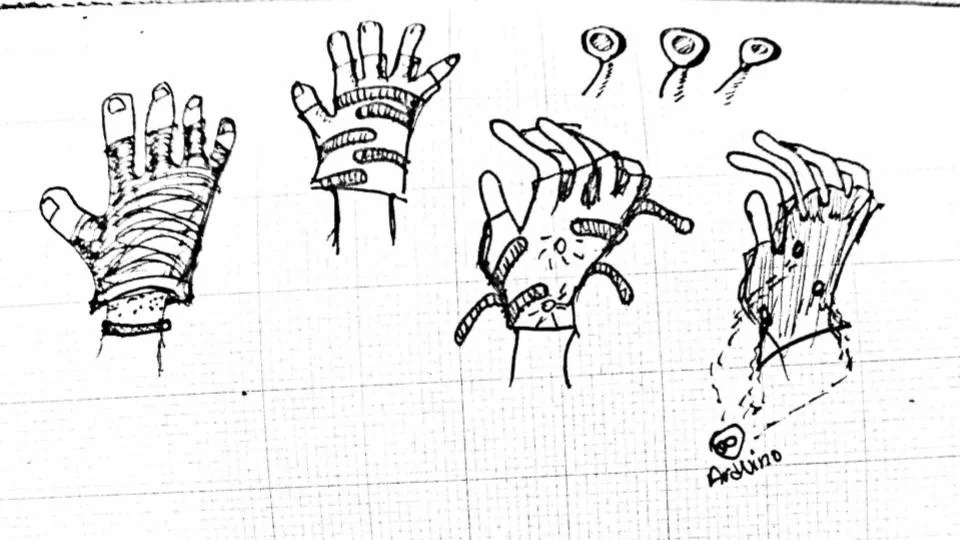
Buzz Glove
Role: Product Designer; User Experience Researcher
Problem
People who have Parkinson’s disease do not have control over their own movements when their condition is severe. Their activities are often limited. There are few ways to cope and alleviate the symptoms such as uncontrollable tremors and trouble with balance. There are few tools used in physical therapy or at home to help.
Solution
I designed a glove that works with motors and sensors to provide a person with haptic feedback that registers a reward mechanism. BuzzGlove will ideally help the brain control tremors using the designed reward system. When the user receives haptic feedback, the brain produces a chemical called dopamine which is deficient in patients who have Parkinson's disease
User Journey
Research
Capacitive sensors + copper tape to transfer conductivity
As a part of my research, I rapid prototyped and tested different sensors for touch sensing with Arduino’s CapSense library:
I ended up using copper tape and stripped wire to communicate to the Arduino. Once I set up the code, I was able to program each strap to speak to the haptic motors.
Feedback
During critique I heard from my peers and Albert Dang - the Director of Design Technology at Frog - that I should practice participatory design. I needed to design Buzzglove mindfully with the user in mind, and with the user. I was reminded by peers that I was taking on the challenge of designing for a chronic disease that I myself do not have.
My insights and concept was built on user research that told me that my audience had unique challenges that have not been successfully addressed. I took my learnings of:
dopamine deficiency
reward systems
VR experimentations
biofeedback
music therapy for Parkinson's
and designed the BuzzGlove as an assistive device for patient physical therapy
Digital sketch of BuzzGlove Design
Final prototype of BuzzGlove





